Next up in the Survival Cooking series is… well, I don’t really have a brand or model for you. Today we’re taking a look at an example of many no-name, variously branded, Chinese-manufactured, isobutane stoves. These ultralight isobutane stoves might not have a durable brand but they work insanely well.
This article contains affiliate links.
Ultralight Isobutane Stoves
These stoves are sold under various names. The one shown here was branded as an “Etekcity Ultralight” but is no longer available under that name…which is just one example of a number of cheap, minimalist, isobutane stoves available on Amazon. All of them appear to be basically identical, but your mileage may vary. Generally I would write them off immediately because of their price-point (around $15). But also, because of the price-point, I couldn’t say “no” to testing one out. I have tested a couple of them. And I’m kind of impressed.
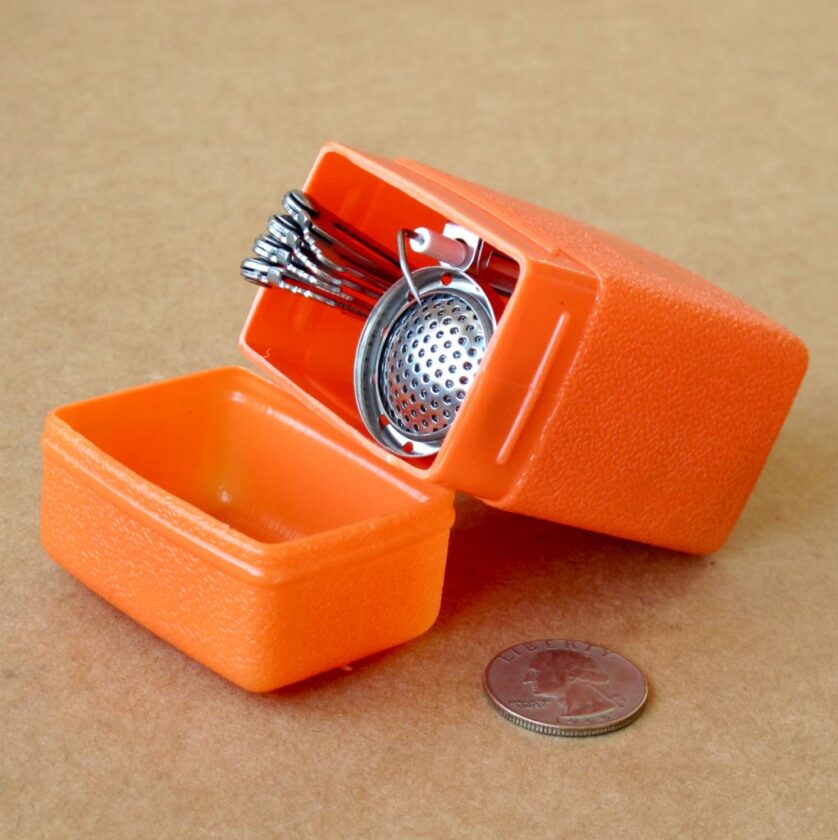
Not only are these stoves light, they are also extremely compact. Thanks to a pretty ingenious collapsing pot-stand and minimalist design, the entire thing is about the size of deck of cards – shorter and narrower, but a little thicker. The constituent parts of the system are all on prominent display, with no weight wasted on a housing. The stove consists of a fuel regulator, burner, piezo ignitor, and the aforementioned folding pot-stand.
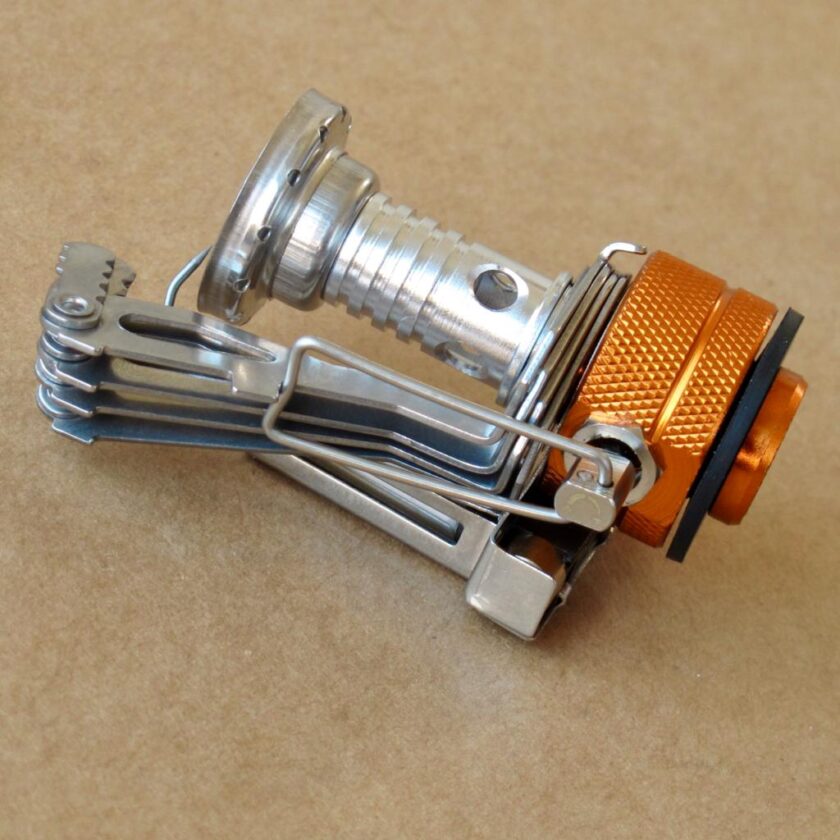
To use this stove simply remove it from its plastic case and screw it onto an isobutane fuel canister. Unfold the pot-support arms. Once you have placed the stove on a stable surface, place a pot or cup on top of it and open the fuel valve. Hit the piezo ignitor, (some must be lit with a flame from another source) and you’re off! The burner temperature can be (somewhat) regulated via the fuel valve. I found this stove to be less efficient than the Jetboil; on average the Jetboil could boil water in about 2/3s the time it took this guy. If you’re backpacking you’ll want to plan for this additional fuel consumption, but it gets the job done and at a very affordable price.
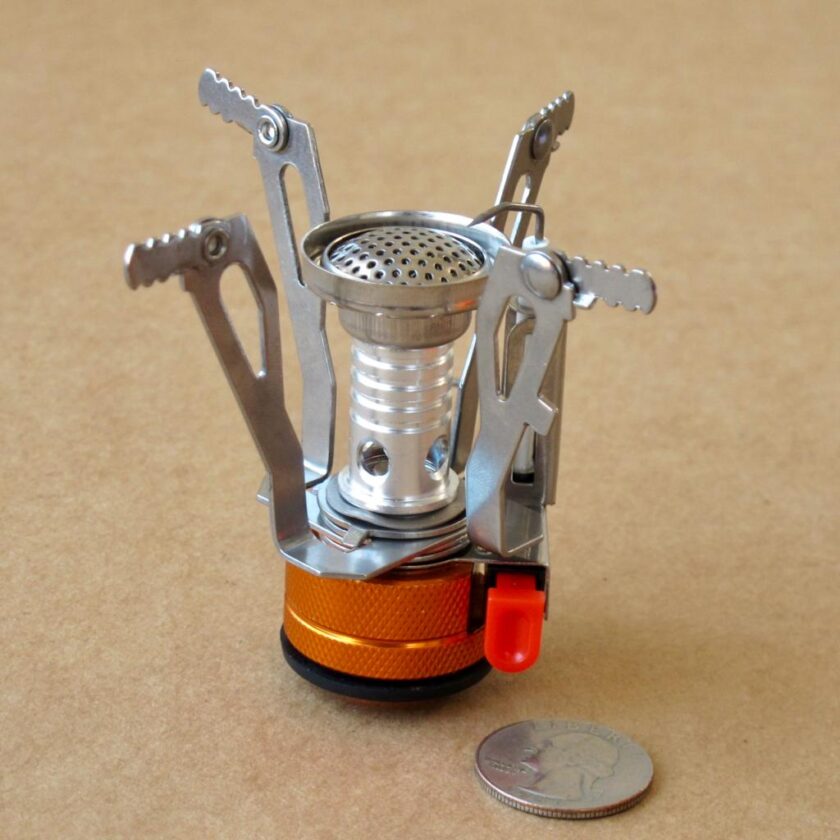
Use Cases for Ultralight Isobutane Stoves
This stove suffers one of the chief disadvantages of the Jetboil: the expensive, availability-sensitive fuel system. At the same time it isn’t quite as efficient as the Jetboil. However, I believe this system makes sense in a couple scenarios. For backpacking, it is far lighter and smaller than the Jetboil. As an emergency stove, it is also far less expensive. Were I constructing a survival or camping setup that was less influenced by weight and size, I would consider purchasing both an Ohuhu wood-fired stove and one of these.
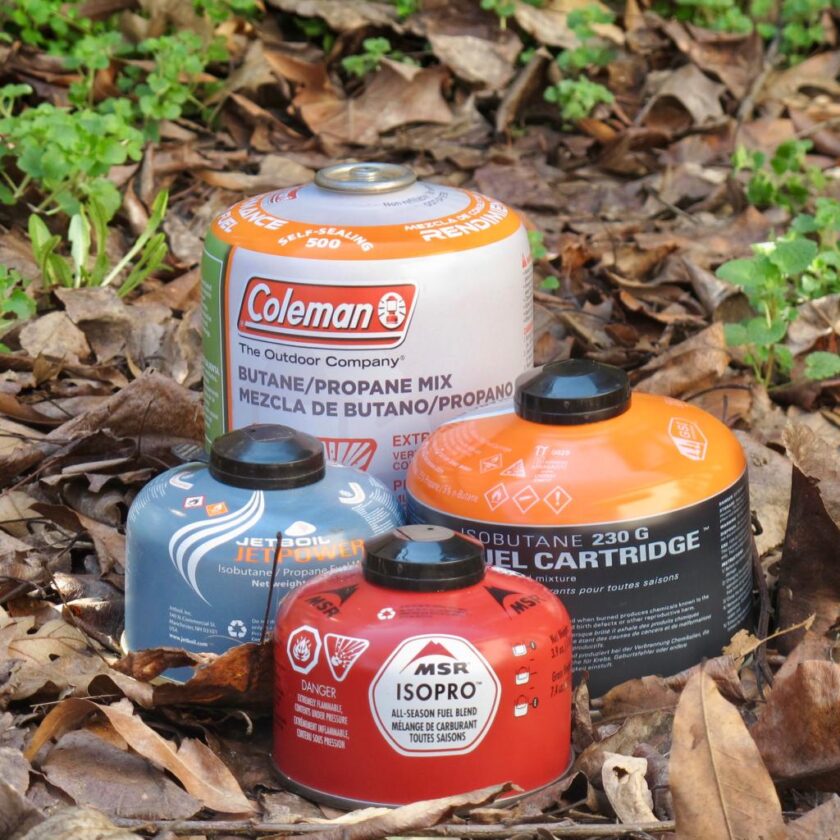
Together, an ultralight isobutane stove and the Ohuhu cost approximately $35. Add $15 for the MSR Alpine Stowaway pot and a couple fuel canisters and you’re only up to $60 or so. That’s about $25 less than you’d spend on a Jetboil sans fuel, and you end up with much more robust capability. The Ohuhu could be used most of the time, since fuel is so readily available (it will burn almost anything). These little isobutane stoves could be reserved circumstances where time (or convenience) is of the essence. Alternatively, they could be the primary, with the Ohuhu standing by for when isobutane fuel has been expended. As a third option, they could be a cheap, compact backup if you’re already a Jetboil owner and have plenty of fuel laid by.
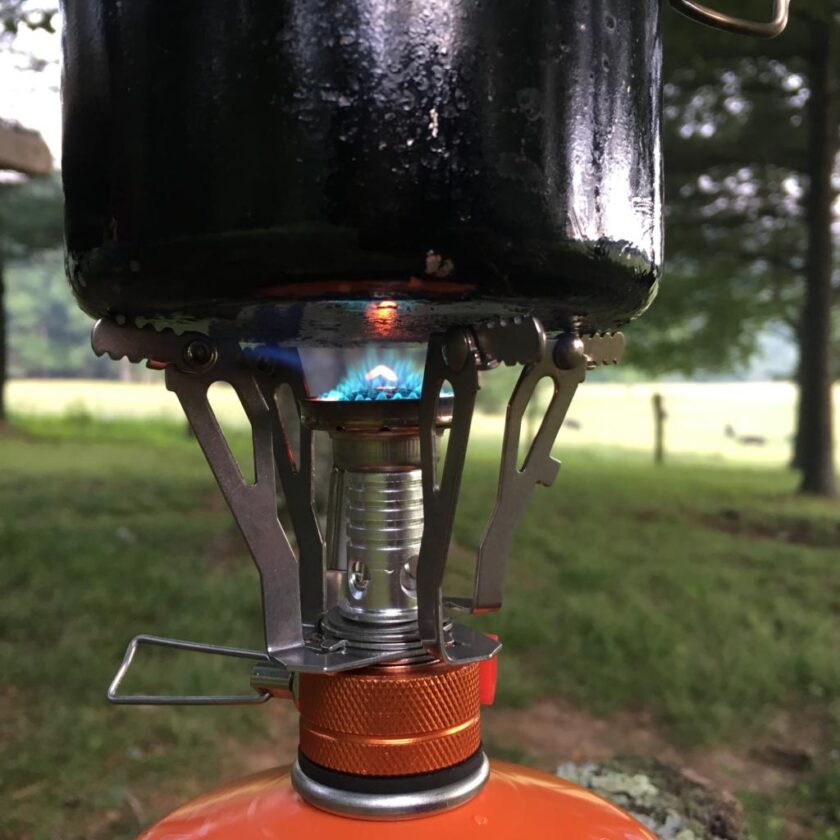
The Bottom Line
This is a really neat stove. It’s light, compact, super cheap, and it works. At this point I’ve used it enough that I would feel confident heading into the backcountry with a no-name, ultralight isobutane stove as my primary stove. Whether you’re outfitting junior backpackers, bugout bags or vehicle kits, or looking for your first outdoor stove, at under $15 each you really can’t go wrong .





